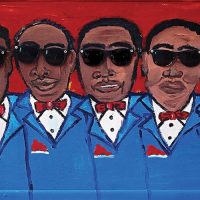NICK DERISO: Pete Fountain, and this is rare, has remained local.
Even now, you can still find this almost-mythical 70-something clarinetist at hometown spots in the New Orleans area, playing native-born favorites. Your garden-variety Marsalis talks about the Crescent City, but can’t be found within a country mile of it on most weekends.
Not Pete. He’s there — and, more often than not, playing signature street-level standards: “When It’s Sleepy Time Down South.” “South Rampart Street Parade.” “When The Saints Come Marching In.” “St. James Infirmary.” And, always, “Do You Know What It Means To Miss New Orleans.”
Each has woven itself into the fabric of the city that birthed jazz, as has Fountain. He’s still your prototypical hometown musical hero, walking the walk — and on Mardi Gras Day, no less. (Who can forget the former Pierre Dewey La Fountaine Jr.’s triumphal return to the Half Fast Walking Club, of which he was a founder, down St. Charles last year?)
People think of Benny Goodman when they hear Fountain, since Goodman (and perhaps Artie Shaw) are all many know of the jazz clarinet. But his sound was really born out of sorrow for a fallen mentor. When seminal New Orleans clarinetist Irving Fazola died in 1949, Pete — then just 18 — let loose a devastatingly emotional elegy in his stead at the Old Opera House on Bourbon Street.
That was the final ingredient in Fountain’s tasty roux of old and new influences. His smart melding of soulful blues with the local sound’s high-stepping delights propelled the youngster out of early associations with local bands like the Junior Dixieland Band and the Basin Street Six and into national stardom.
But never too far away from home.
Fountain’s first big break was as a member of the house band on Lawrence Welk’s 1950’s television program on ABC, but he left after just two years — perceptively noting that “champagne and Jack Daniels don’t mix.” His first two recordings back home were appropriately titled “Pete Fountain’s New Orleans” and “The Blues.”
Their success led to the opening of his own clubs, first on Bourbon then at the Hilton down by the riverside (where he played from the 1970s through 2003), and on to countless travelling engagements — from Johnny Carson (nearly 60 times), to Europe. Still, Fountain’s inevitable homecomings became more and more grand, to the point where many trace the evolution of the Jazz and Heritage Festival back to a city-declared Pete Fountain Day of music and revelry.
Soon, it was clear that he shouldn’t have ever left home. So, he never did again. Fountain still schedules the odd weekday gig over at Bay St. Louis, where all of his earthly belongings were nearly washed away by Katrina.
He has recorded more than 100 albums under his own name, many of the best for Coral — an old subsidiary of MCA/Decca — in the late ’50s and early ’60s. Still, you won’t see a show from Fountain that doesn’t include “Just A Closer Walk With Thee.”
Fountain, married now for nearly 60 years to wife Beverly, sticks with things. And that’s always meant he stuck with us, too.
- Nick DeRiso’s Best of 2015 (Rock + Pop): Death Cab for Cutie, Joe Jackson, Toto + Others - January 18, 2016
- Nick DeRiso’s Best of 2015 (Blues, Jazz + R&B): Boz Scaggs, Gavin Harrison, Alabama Shakes - January 10, 2016
- Nick DeRiso’s Best of 2015 (Reissues + Live): John Oates, Led Zeppelin, Yes, Faces + others - January 7, 2016



